-
 Bitcoin
Bitcoin $83,407.2371
-1.63% -
 Ethereum
Ethereum $1,823.1395
-3.06% -
 Tether USDt
Tether USDt $0.9997
-0.02% -
 XRP
XRP $2.0473
-2.23% -
 BNB
BNB $600.1100
-0.49% -
 Solana
Solana $119.7021
-3.88% -
 USDC
USDC $0.9998
-0.01% -
 Dogecoin
Dogecoin $0.1648
-3.39% -
 Cardano
Cardano $0.6519
-2.39% -
 TRON
TRON $0.2368
-0.66% -
 Toncoin
Toncoin $3.8129
-4.99% -
 UNUS SED LEO
UNUS SED LEO $9.3898
-0.23% -
 Chainlink
Chainlink $13.1549
-4.15% -
 Stellar
Stellar $0.2637
-1.07% -
 Sui
Sui $2.4035
1.65% -
 Avalanche
Avalanche $18.5674
-3.45% -
 Shiba Inu
Shiba Inu $0.0...01232
-0.30% -
 Hedera
Hedera $0.1654
0.03% -
 Polkadot
Polkadot $4.0578
-0.51% -
 Litecoin
Litecoin $82.9613
0.22% -
 MANTRA
MANTRA $6.3104
1.76% -
 Bitcoin Cash
Bitcoin Cash $301.4958
-1.14% -
 Bitget Token
Bitget Token $4.5444
-0.98% -
 Dai
Dai $0.9999
-0.01% -
 Ethena USDe
Ethena USDe $1.0000
0.02% -
 Pi
Pi $0.6681
-3.26% -
 Hyperliquid
Hyperliquid $12.3441
-5.68% -
 Monero
Monero $216.6690
-0.88% -
 Uniswap
Uniswap $5.9832
-2.69% -
 Aptos
Aptos $5.2233
-0.17%
What is a bridge? Understand bridges in blockchain in one article
Blockchain bridges facilitate the transfer of digital assets across incompatible blockchain networks, enhancing interoperability and unlocking access to diverse markets.
Oct 24, 2024 at 08:17 pm

What is a Bridge? Understanding Bridges in the Blockchain Ecosystem
1. Defining a Blockchain Bridge
A blockchain bridge is a platform that facilitates the transfer of digital assets between two or more incompatible blockchain networks. It acts as a bridge or gateway, allowing interoperability and asset movement across different ecosystems.
2. Purpose and Use Cases of Bridges
- Cross-chain Transactions: Bridges enable users to transfer tokens, NFTs, and other crypto assets from one blockchain to another, such as transferring funds from Ethereum (ETH) to Binance Smart Chain (BNB).
- Enhanced Interoperability: Bridges break down barriers between blockchains, enhancing interoperability and enabling cross-platform collaboration.
- Access to New Markets: Bridges provide access to assets and markets that would otherwise be inaccessible on a single blockchain network.
3. Types of Bridges
There are various types of blockchain bridges, each with its own characteristics:
- Federated Bridges: Controlled by a group of entities that manage the bridge infrastructure and transaction validation.
- Non-Federated Bridges: Autonomous and self-sufficient bridges that do not rely on central entities for operation.
- Custodial Bridges: Store user assets on behalf of the bridge operator, providing a user-friendly experience but potentially compromising security.
- Non-Custodial Bridges: Transfer assets directly between users' wallets without involving any intermediaries or custodians, offering higher security.
4. Considerations for Choosing a Bridge
When selecting a blockchain bridge, several factors should be considered:
- Security: Assess the bridge's security measures, such as multi-sig controls and smart contract audits.
- Transaction Speed: Evaluate the processing time and throughput of the bridge.
- Cross-Chain Compatibility: Ensure that the bridge supports the desired assets and the target blockchain networks.
- Fees: Compare the transaction fees charged by different bridges.
- Ease of Use: Consider the user-friendliness and accessibility of the bridge's platform.
5. Popular Blockchain Bridges
- OKXChain Bridge: Facilitates asset transfers between OKXChain and other leading blockchains, such as Ethereum, BSC, and Polygon.
- ThorChain: A non-custodial bridge that supports native cross-chain swaps between multiple cryptocurrencies.
- Hop Protocol: A fast and secure bridge specializing in cross-chain asset transfers for NFTs and fungible tokens.
- cBridge: A cross-chain liquidity platform that connects multiple blockchain ecosystems and enables cross-asset swaps.
- AnySwap: A multi-chain bridge that provides instant asset transfers across various blockchain networks, including Ethereum, Arbitrum, Optimism, and Fantom.
Conclusion
Blockchain bridges play a pivotal role in the interoperability and growth of the blockchain ecosystem. By enabling cross-chain asset transfers, bridges bridge the gaps between different blockchain networks, expanding access to markets, enhancing collaboration, and driving the broader adoption of decentralized technologies.
Disclaimer:info@kdj.com
The information provided is not trading advice. kdj.com does not assume any responsibility for any investments made based on the information provided in this article. Cryptocurrencies are highly volatile and it is highly recommended that you invest with caution after thorough research!
If you believe that the content used on this website infringes your copyright, please contact us immediately (info@kdj.com) and we will delete it promptly.
- RUVI AI Revolutionizes AI Accessibility with Blockchain Power
- 2025-04-03 11:15:12
- Fidelity Investments Introduces an IRA That Permits Investors to Buy Bitcoin, Ether, and Litecoin
- 2025-04-03 11:15:12
- Whale Alert Detects a Large Bitcoin Transfer Involving 1050 BTC from Binance to an Unknown Wallet
- 2025-04-03 11:10:12
- Democratic Lawmakers Ask US Securities Regulator to Preserve Records of President Trump's Crypto Venture
- 2025-04-03 11:10:12
- Curve Finance Notches Record-Breaking Trading Volumes of Nearly $35 Billion in the First Quarter of 2025
- 2025-04-03 11:05:13
- Coinlist restarts US operations after five-year hiatus
- 2025-04-03 11:05:13
Related knowledge
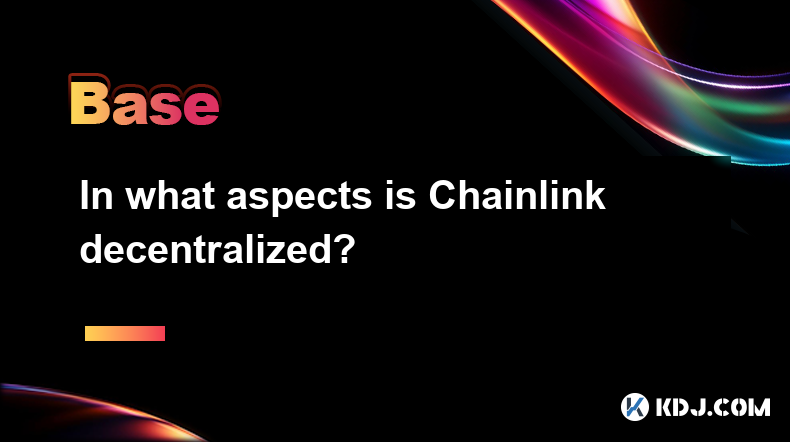
In what aspects is Chainlink decentralized?
Apr 02,2025 at 05:49pm
Chainlink is a decentralized oracle network that plays a crucial role in connecting smart contracts on blockchain networks with real-world data. Its decentralization is reflected in multiple aspects, ensuring the network's security, reliability, and integrity. This article delves into the various ways Chainlink achieves decentralization, including its n...
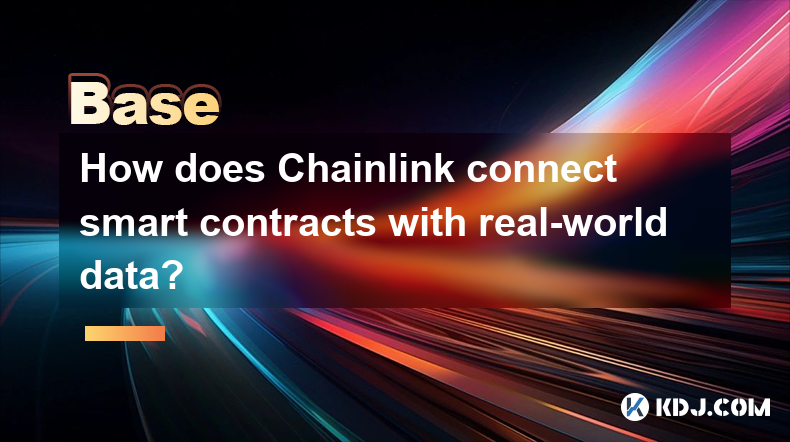
How does Chainlink connect smart contracts with real-world data?
Apr 02,2025 at 03:56pm
Chainlink is a decentralized oracle network that plays a crucial role in connecting smart contracts on blockchain platforms with real-world data. Smart contracts are self-executing contracts with the terms of the agreement directly written into code, but they can only interact with on-chain data. To access real-world data, such as stock prices, weather ...
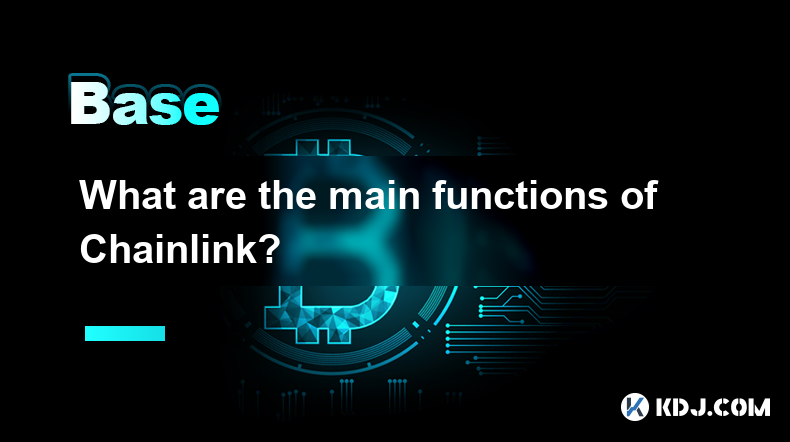
What are the main functions of Chainlink?
Apr 02,2025 at 11:49pm
Chainlink is a decentralized oracle network that plays a crucial role in connecting smart contracts with real-world data and external APIs. The primary function of Chainlink is to facilitate the seamless integration of off-chain data into on-chain smart contracts, enabling them to execute based on real-world events and information. This integration is v...

How does Chainlink work?
Apr 03,2025 at 01:50am
Chainlink is a decentralized oracle network that connects smart contracts with real-world data and external APIs. It plays a crucial role in the blockchain ecosystem by enabling smart contracts to interact with data outside their native blockchain environment. This connectivity is essential for smart contracts to execute based on real-world events and d...
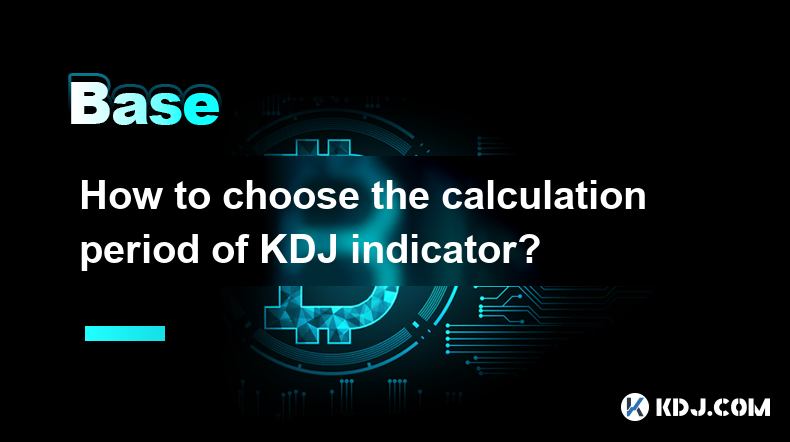
How to choose the calculation period of KDJ indicator?
Apr 02,2025 at 01:00pm
The KDJ indicator, also known as the Stochastic Oscillator, is a popular technical analysis tool used by cryptocurrency traders to identify potential buy and sell signals. The calculation period of the KDJ indicator is crucial in determining its effectiveness in predicting market trends. In this article, we will explore the factors to consider when choo...
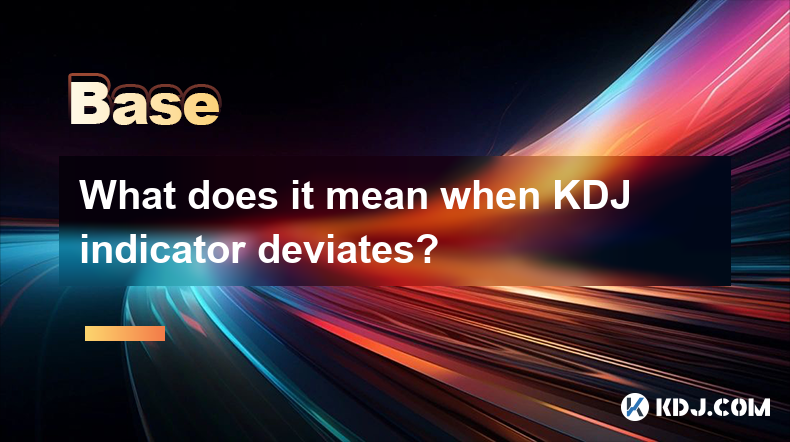
What does it mean when KDJ indicator deviates?
Apr 01,2025 at 03:08pm
The KDJ indicator, also known as the Stochastic Oscillator, is a popular technical analysis tool used in the cryptocurrency market to predict price movements. When the KDJ indicator deviates, it means that the current price of a cryptocurrency is moving away from its typical range, as indicated by the KDJ lines. This deviation can signal potential trend...

In what aspects is Chainlink decentralized?
Apr 02,2025 at 05:49pm
Chainlink is a decentralized oracle network that plays a crucial role in connecting smart contracts on blockchain networks with real-world data. Its decentralization is reflected in multiple aspects, ensuring the network's security, reliability, and integrity. This article delves into the various ways Chainlink achieves decentralization, including its n...

How does Chainlink connect smart contracts with real-world data?
Apr 02,2025 at 03:56pm
Chainlink is a decentralized oracle network that plays a crucial role in connecting smart contracts on blockchain platforms with real-world data. Smart contracts are self-executing contracts with the terms of the agreement directly written into code, but they can only interact with on-chain data. To access real-world data, such as stock prices, weather ...

What are the main functions of Chainlink?
Apr 02,2025 at 11:49pm
Chainlink is a decentralized oracle network that plays a crucial role in connecting smart contracts with real-world data and external APIs. The primary function of Chainlink is to facilitate the seamless integration of off-chain data into on-chain smart contracts, enabling them to execute based on real-world events and information. This integration is v...

How does Chainlink work?
Apr 03,2025 at 01:50am
Chainlink is a decentralized oracle network that connects smart contracts with real-world data and external APIs. It plays a crucial role in the blockchain ecosystem by enabling smart contracts to interact with data outside their native blockchain environment. This connectivity is essential for smart contracts to execute based on real-world events and d...

How to choose the calculation period of KDJ indicator?
Apr 02,2025 at 01:00pm
The KDJ indicator, also known as the Stochastic Oscillator, is a popular technical analysis tool used by cryptocurrency traders to identify potential buy and sell signals. The calculation period of the KDJ indicator is crucial in determining its effectiveness in predicting market trends. In this article, we will explore the factors to consider when choo...

What does it mean when KDJ indicator deviates?
Apr 01,2025 at 03:08pm
The KDJ indicator, also known as the Stochastic Oscillator, is a popular technical analysis tool used in the cryptocurrency market to predict price movements. When the KDJ indicator deviates, it means that the current price of a cryptocurrency is moving away from its typical range, as indicated by the KDJ lines. This deviation can signal potential trend...
See all articles
























































































